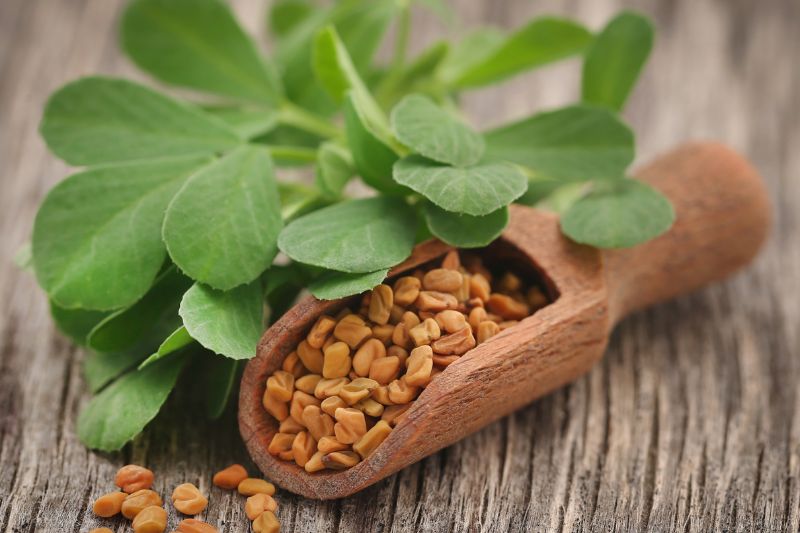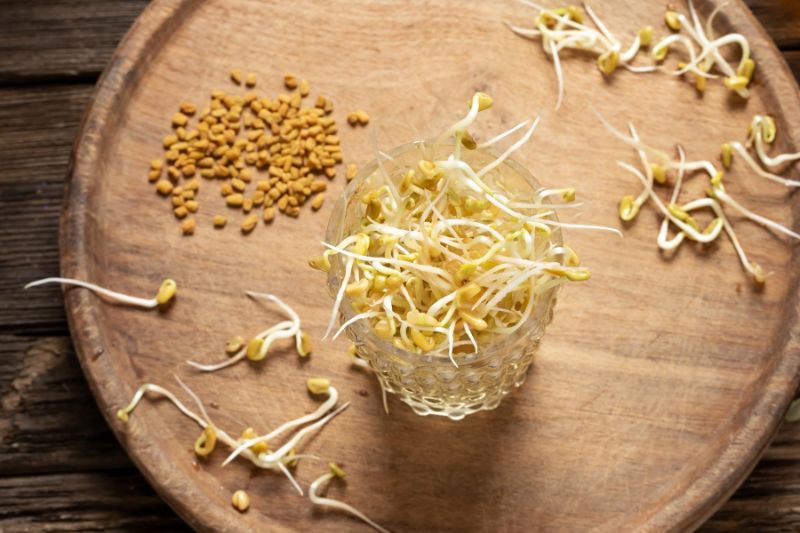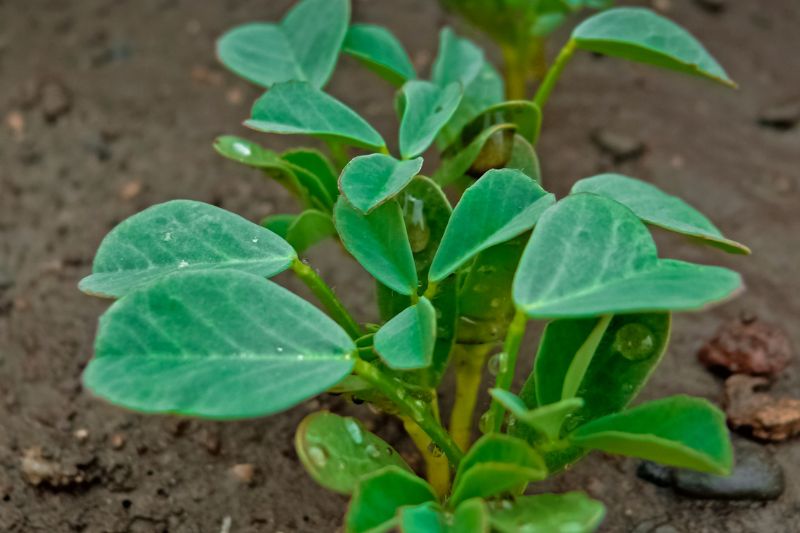Fenugreek (Trigonella foenum-graecum), also known as trigonella, is an annual plant from the Fabaceae family. Native to the Middle East and North Africa, this legume is cultivated for its seeds, which have medicinal, culinary, and aromatic properties. Its leaves are used as a leafy vegetable, while its seeds are used as a spice in many dishes, particularly in curry. Beyond its culinary uses, fenugreek is renowned for its health benefits, being rich in vitamins, minerals like calcium, and known to stimulate digestion. It is also used as a green manure in the garden.
Sowing trigonella is an economical and simple way to introduce this medicinal plant to your garden or kitchen. Whether grown in pots, in the ground, or for sprouting its seeds, discover our tips for sowing fenugreek.

Why sow fenugreek?
Sowing fenugreek offers numerous benefits:
- Reduced costs: Producing your own fenugreek seeds is more economical than buying them from a shop.
- Rapid growth: Germination is quick, with shoots visible within a few days.
- Versatile use: Fresh leaves can be eaten in salads, sprouted seeds enrich your dishes or can be ground into powder for added flavour. The plant also serves as green manure.
- Soil improvement: As a legume, fenugreek fixes nitrogen and enriches the soil for subsequent crops.
- Melliferous plant: Its yellow flowers attract pollinators and promote biodiversity in the garden.
Did you know?
Fenugreek is also cultivated for its virtues. To learn more, read our article: "Growing medicinal plants: fenugreek and its health benefits".
When to sow fenugreek?
The sowing period for trigonella varies depending on the cultivation method:
- Indoors or in a greenhouse: Start sowing from late March for an early crop.
- In open ground: Sow in spring, from mid-April to late July, once the last frosts have passed.
- In autumn: Sowing in September is possible in regions with mild climates for a late harvest or to use it as green manure.
Fenugreek is a fast-growing annual plant that tolerates cool conditions well, but avoid sowing during periods of extreme heat or frost.
Where to sow fenugreek?
Fenugreek is easy to grow and adapts to various environments:
- Exposure: Prefer a sunny spot or light partial shade in summer.
- Soil type: Fenugreek thrives in light, well-drained soil rich in nitrogen. It tolerates alkaline or acidic soils, as long as the soil remains slightly moist but not waterlogged.
- In pots: Choose a deep pot with good drainage. Ideal for balconies or terraces.

Materials needed to sow fenugreek
To successfully plant fenugreek, prepare:
- Fenugreek seeds: Opt for organic seeds or those from organic farming. You can also harvest your own seeds (see the last chapter).
- Buckets or a pot for indoor sowing.
- Seed compost is ideal, or a mix of light compost with sand to improve drainage.
- A watering can with a fine rose for gentle watering.
- Plastic film or a mini greenhouse to maintain humidity.
- Optional: A seed spreader to space the seeds when sowing in open ground.
If you simply want to sprout the seeds for culinary use, use a sprouter. It allows you to obtain nutrient-rich sprouts in just a few days, perfect for salads and sandwiches.

Practical steps to sow fenugreek
Seed preparation:
Soaking the seeds: Soak them in cold water for 8 to 12 hours to encourage germination. Preferably use spring water (if consuming the sprouts) or rainwater (for growing the plant) to avoid chlorine in tap water, which can affect seed quality.
Sowing in pots or indoors:
- Prepare the substrate: Fill your buckets or pots with seed compost or a mix of compost and sand.
- Moisten the substrate lightly.
- Sow the seeds: Spread them on the surface, spacing them 2 to 3 cm apart.
- Cover lightly with a thin layer of compost (1 cm).
- Water gently with a watering can fitted with a fine rose.
- Cover with plastic film or place the pots in a mini greenhouse to maintain constant humidity and facilitate rapid germination.
- Place the pots in a bright location at room temperature, avoiding direct sunlight to prevent drying out the young shoots. Germination occurs in 3 to 5 days.
- Remove the plastic film as soon as the shoots appear to avoid excess humidity and promote growth.
- When the young plants reach a height of about 10 cm, acclimatise them gradually by exposing them outdoors during the day. Once nighttime temperatures remain above 10°C, transplant them into open ground, spacing them 5 to 10 cm apart.

Sowing in open ground:
- Prepare the soil: Loosen the soil and remove stones.
- Create furrows 1 to 2 cm deep, spaced 15 cm apart.
- Sow the seeds directly, spacing them slightly.
- Cover with fine soil and lightly firm.
- Water to maintain consistent soil moisture, but avoid overwatering.
Note: For use as green manure or to harvest only young leaves, you can reduce the spacing or even broadcast sow.
After sowing: care and maintenance of young plants
- Thinning: When seedlings reach 5 cm, thin them to leave a space of 5 to 10 cm between each plant. Simply cut the stem at ground level to avoid disturbing the roots of other seedlings.
- Watering: Keep the soil cool, meaning slightly moist, but avoid excess water to prevent damping off.
- Fenugreek care: Fenugreek can be susceptible to fungal diseases such as powdery mildew or rust. To prevent these, avoid wetting the foliage when watering and ensure good spacing between plants to promote air circulation. Monitor the foliage regularly.
- Crop rotation: Avoid sowing fenugreek in the same spot every year to preserve soil quality.

Harvesting fenugreek
- Fenugreek leaves: Harvest fresh leaves once they reach 10 to 15 cm to use as an aromatic herb. Leaf harvesting can be done multiple times during the season by cutting young shoots to encourage new growth.
- Fenugreek seeds: Allow the plant to flower, then harvest the pods when they turn brown and begin to dry. Cut the entire stems and hang them upside down in a dry, airy place for complete drying. Once the pods are fully dry, shell them to retrieve the seeds. Store fenugreek seeds in an airtight container or paper envelope, away from light and moisture, to preserve their flavour and medicinal properties.
































Comments